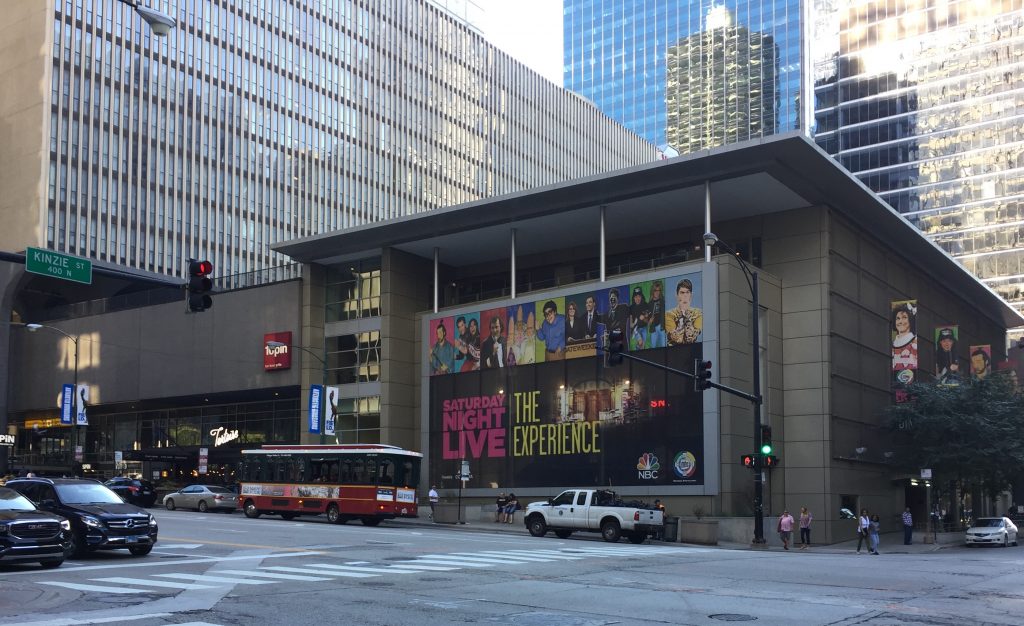In order to keep its doors open, Chicago’s Museum of Broadcast Communications plans to sell two floors of its four-story building in River North, according to multiple sources.
The board of the nonprofit museum is close to finalizing a deal with Fern Hill Co., a privately-held real estate development and investment firm, to take over the third and fourth floors of the site, located at the southwest corner of State and Kinzie Streets.
It's not known what plans Fern Hill has for the space, which is currently used by the museum for exhibits (including "Saturday Night Live: The Experience," which ends its year-long run in December) and special events.
Sources said the agreement will net $6 million, to be used to continue operating the museum and paying down debt — especially a $3.7 million mortgage held by Pepper Construction Co. After seven years of construction delays and setbacks, the 62,000-square-foot building opened in 2012 thanks to the mortgage from Pepper and funding from the state of Illinois. Pepper has granted numerous extensions for the loan.
Museum officials declined to comment on the pending transaction. Last March, after the museum board retained Marcus & Millichap to handle the sale, board chairman Larry Wert said in statement: “We have a wonderful location that may have more square footage than necessary to meet the future needs of the museum. We simply are looking at options to improve the future educational and entertainment experience for our patrons. Any proceeds would put the institution on a solid financial foundation.”
The shrine to American broadcasting (with emphasis on Chicago's role in radio and television) has occupied three public spaces since the museum first opened at the River City condominium complex in 1987. From 1992 to 2003 it drew crowds to the Chicago Cultural Center. Now just six years after reopening at 360 North State Street, the museum is paying a high price to survive.
In reducing its public space by two-thirds, it will have to downsize the facility to the second floor. (Most of the first floor is leased by STK Chicago, the steakhouse which fronts at 9 West Kinzie Street.) That means the museum will have approximately 12,000 square feet to accommodate the National Radio Hall of Fame, the Paul and Angel Harvey Radio Studio, and its permanent displays as well as its vast collection of artifacts and exhibits — from Bozo's buckets to Svengoolie's coffin. Video and audio archives — most of which are neither digitized nor accessible to the public — remain stored in the basement.
The consolidation would make the Museum of Broadcast Communications comparable in size to the American Writers Museum, which opened in 2017 in an 11,000 square-foot space on the second floor of 180 North Michigan Avenue.
Bruce DuMont, the Chicago broadcaster and nephew of the late DuMont Network pioneer Allen B. DuMont, retired last year as president of the museum he founded in 1983. Day-to-day operations are now headed by Julian Jackson, a veteran of Milwaukee Public Museum and Adler Planetarium, who was named the museum's first executive director in March.
Friday's comment of the day: Joe Dennis: A Chicago native taking over the helm of The Reader. Hometown employees taking ownership of the Daily Herald. A Chicago legend returning to Chicago radio. What a (rare) great week for Chicago media!


